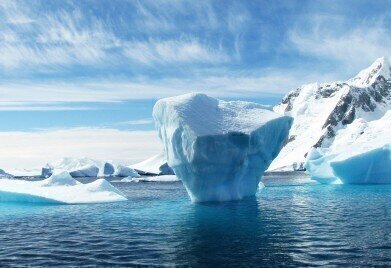Environmental Laboratory
How Fast Are the Ice Caps Melting?
May 03 2020
The polar ice caps in Greenland and Antarctica are melting at a rate six times faster than that observed less than 30 years ago, according to new research carried out by the Intergovernmental Panel on Climate Change (IPCC). The analysis examines a range of different studies across the world and has forecast 2019 as a record-breaking year once data becomes readily available.
In their report, the IPCC warn that as many as 400 million people could be exposed to the effects of coastal flooding by 2100, if current emission levels remain unchecked. Due to the slow chain reaction process of ice thaws, the authors state that sea level rises will continue to be experienced for at least 30 years even if we switched to a zero-carbon economy today, but that taking action to curb emissions immediately was still of the utmost importance in maximising damage mitigation.
Gloomy outlook
The study was conducted by an international team of 89 scientists from 50 different organisations around the globe, who compiled data from 26 ice survey investigations. Among those were 11 satellite projects which monitored the mass, volume and speed of flow of ice sheets at both the North and South Pole, as well as field warming experiments carried out in the Arctic.
Their findings revealed that ice loss in the 1990s amounted to an average of 81 billion tonnes per year. By the 2010s, that figure had increased almost sixfold to an incredible 475 billion tonnes per annum. Taken together, the two polar ice caps lost a cumulative 6.4 trillion tonnes of ice between 1992 and 2017, with the northern ice sheets in Greenland responsible for around 60% of that total. Those 6.4 trillion tonnes account for around a third of sea level increases in that time, with rising ocean temperatures responsible for about half of the increase and other glacial thaws accounting for the rest.
Countless lives under threat
The IPCC’s previous estimate of the amount of sea level increase we will experience by 2100 stood at 53cm, which was projected to affect around 360 million people. However, the latest research indicates that we could see sea levels increases closer to 70cm by the end of the century, affecting an additional 40 million coastal residents. With natural flood events difficult enough to manage already, countries all round the world could find their coastal defences overwhelmed in the coming decades.
“Every centimetre of sea level rise leads to coastal flooding and coastal erosion, disrupting people’s lives around the planet,” explained Professor Andrew Shepherd, who served as co-lead author on the most recent research. “These are not unlikely events with small impacts. They are already under way and will be devastating for coastal communities.”
Digital Edition
IET 34.2 March 2024
April 2024
Gas Detection - Biogas batch fermentation system for laboratory use with automatic gas analysis in real time Water/Wastewater - Upcycling sensors for sustainable nature management - Prist...
View all digital editions
Events
Apr 22 2024 Hannover, Germany
Apr 22 2024 Marrakech, Morroco
Apr 23 2024 Kuala Lumpur, Malaysia
Apr 23 2024 Kintex, South Korea
Apr 23 2024 Edmonton, AB, Canada


















